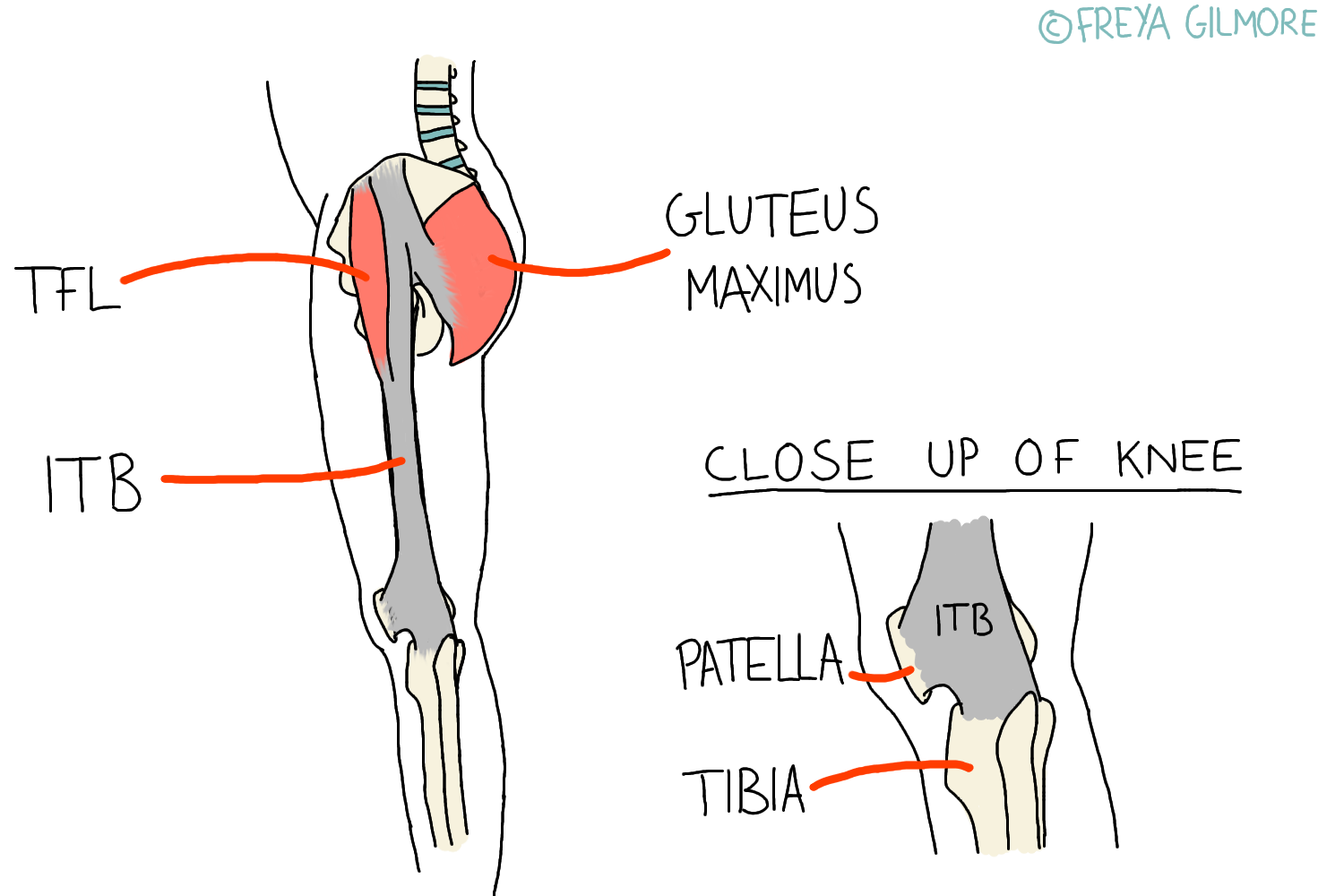The ITB (Iliotibial Band)
Often vilified by runners, the ITB is not actually a muscle but a band of tissue. It runs down the outer side of the thigh and serves the purpose of helping to stabilise the knee. But as it’s not a muscle, it doesn’t respond to massage like one.
Tension in the ITB
Although it’s not a muscle, it can become more taught. This might manifest as pain or just tension, inspiring some people to attack it with a foam roller. But studies show that it would take an incredible amount of force to impact the stretch of the ITB itself. Instead, it makes more sense to target the TFL: the small muscle that blends into the top of the band. It’s this muscle that’s responsible for the tension in the IT band itself. Before you reposition that roller, ask yourself why the muscle is putting the band under tension.
Stabilising the Knee
The image above shows how the band blends into the side of the knee. This anatomy is important, as it means that tension in the band can help with stabilising those knee structures. There are a few reasons why the brain might (subconsciously) choose to increase tension and stability around the knee like this:
there’s been an injury to the knee
the demand on the knee has increased (without injury)
the knee is especially mobile
there’s pain in and around the knee
If any of these are true, do you really want to take that stabilising mechanism away?
Alternatively, the TFL could start to guard the area if the other gluteal muscles are tight, for example if you have some hip or lower back pain that the brain thinks is cause for protection. Rolling the TFL here might have an immediate effect, but we would expect the symptoms to return as long as the underlying cause is not addressed. Depending on your case, you might find that as long as you work through enough muscle groups, your symptoms will diminish. Or you might have to get to the root of your back or hip pain before the ITB will respond.
Managing ITB Tension
If you know that your symptoms developed after increasing your training, you might find that they settle once you get use to your new routine. But if your discomfort has come on for no apparent reason, or follows an injury, it’s best to get it checked out.
At your osteopathy appointment, we will look at how everything works together to understand exactly why the TFL is asking for more stability. It’s possible that this is the first indicator of something underlying, like maltracking, bursitis or early osteoarthritis. Early diagnosis means early intervention, which in turns means there’s less work to do to get you back on track. This might be especially appealing if you’re keen to avoid dropping your exercise.
With an understanding of the whole pain picture, we can devise a plan to address your symptoms and their root cause. A combination of soft tissue massage, stretching, and joint mobilisation or manipulation comprise the usual basic treatment plan. We can also advise on stretching and exercising at home, including how best to alter your current training schedule to aid pain relief.
Click here to make an appointment for your ITB pain in Flitwick

